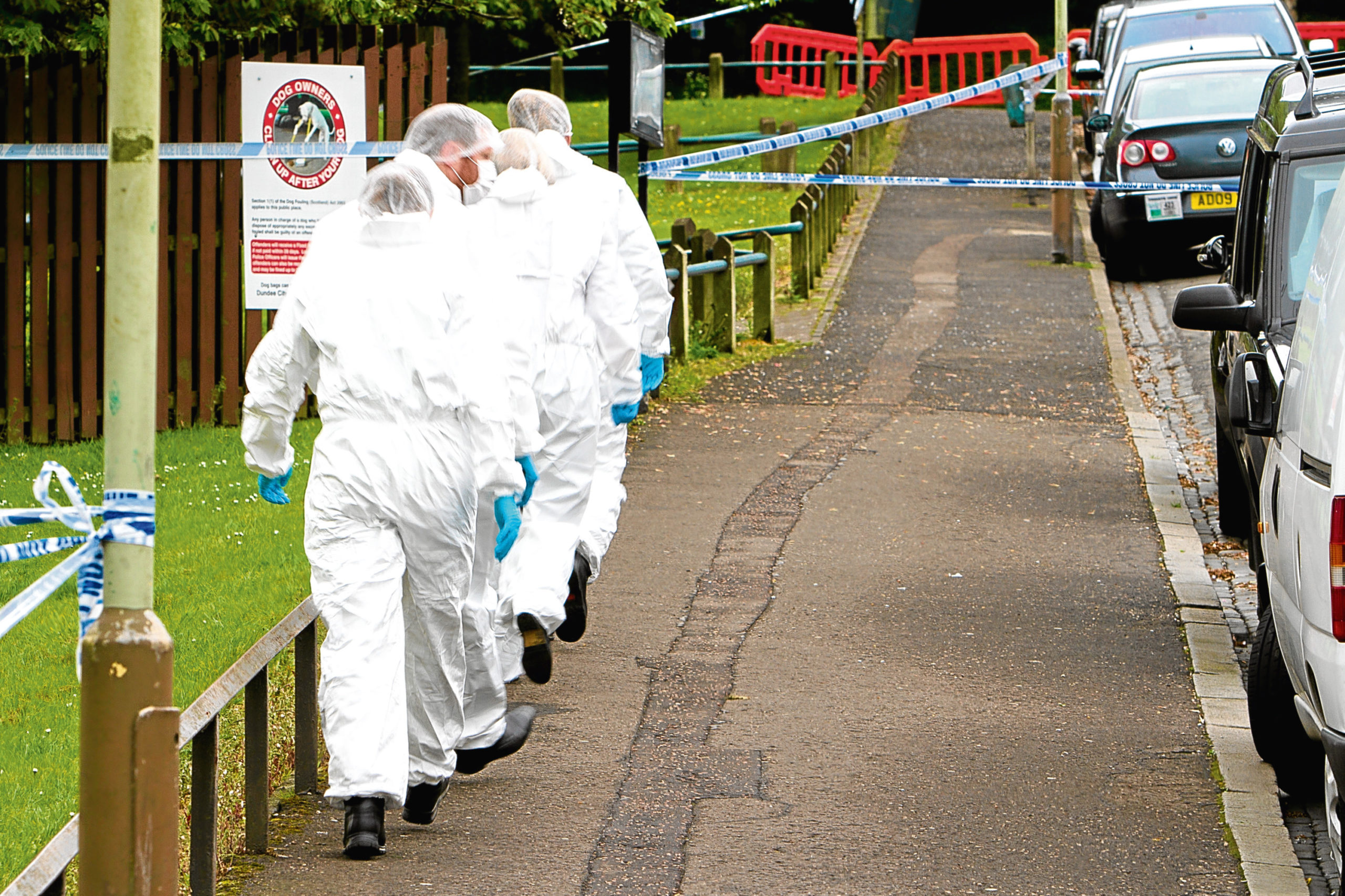A man accused of murder broke down in tears as pictures of his alleged victim’s post mortem were shown to a court.
Arran Fender, 31, is standing trial for the killing of 44-year-old Gary McMillan in the early hours of May 16 last year, at the junction of Lawton Road and Lawton Terrace. He denies the charges, claiming self-defence.
Giving evidence at the High Court in Edinburgh, pathologist Dr David Saddler, who performed Mr McMillan’s post mortem examination, said the cause of death was “stab wounds to the chest”.
As images of the first of the five wounds suffered by Mr McMillan — a large stab wound to the left arm — were shown to the court, Fender broke down sobbing.
His counsel, Donald Findlay QC, asked for the rest of the images only to be shown to the jury, the judge, legal staff and Dr Saddler, so Fender would not become “unnecessarily upset”.
The trial was briefly adjourned so Fender could compose himself.
Dr Saddler, a senior lecturer in forensic medicine at the University of Dundee, said the fatal stab wound was to the upper left armpit, entering the chest between two ribs, and through the upper lobe of the left lung, causing a cut in the small airways and allowing blood to enter into Mr McMillan’s lungs.
He said death would have occurred “in a number of minutes” of the wound being inflicted.
A large kitchen knife found at the scene was “more likely” to have been the weapon used in the attack, Dr Saddler said.
A second “dagger-style” double-edged blade was found by a police officer in the communal garden of Fender’s home address, but DNA evidence indicated Mr McMillan was not stabbed by this knife.
Fender denies inflicting blunt force trauma to Mr McMillan and repeatedly striking him on the body with a knife or similar instrument.
He is also accused of attempting to pervert the course of justice by giving his mother, Annie Hamilton, clothes and footwear he was wearing at the time of the alleged murder and asking her to dispose of them in a bin chute in Landsdowne Court.
He also denies possessing a knife on May 15 and threatening Mr McMillan with a knife between February 1 and March 31.
The trial continues.


